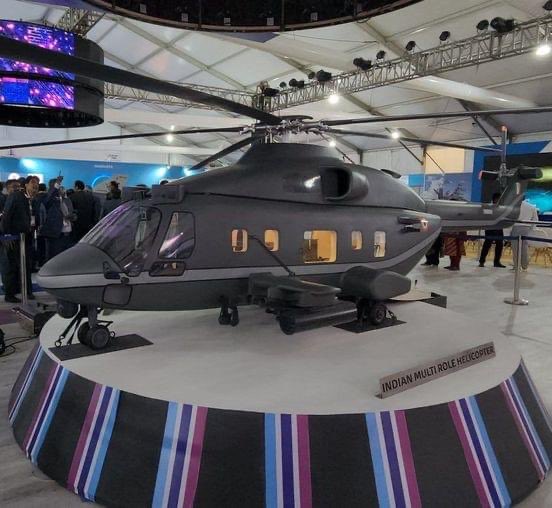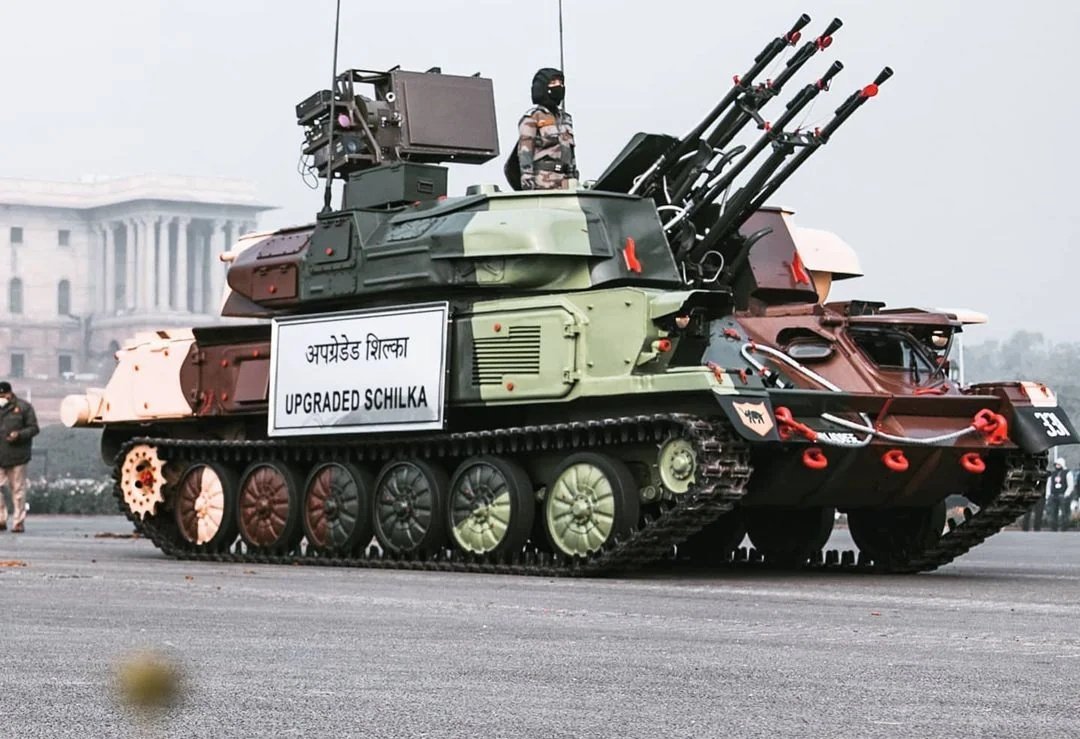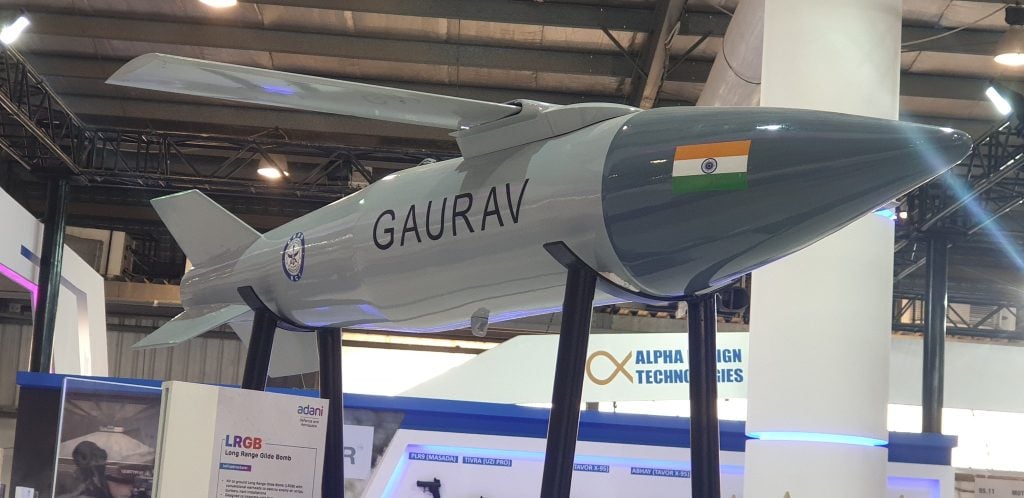SOURCE: AFI


In a stride towards a greener, more sustainable future, Sagar Defence Engineering (SDEPL) has announced a groundbreaking partnership with Flowcopter, aiming to revolutionize the realm of heavy lift drones. This collaboration is set to usher in an era where logistics and aerial mobility are not only automated, connected, and electrified but also significantly reduce carbon footprints.
Sameer Joshi, CEO of Sagar Defence Engineering, highlighted the challenges and opportunities in this venture, stating, “The future will be #automated, #connected, low carbon, and #electrified. So… how do we get there! The above comes with a high cost when we talk about Green Revolution in terms of Electromechanical actuation, Fuel Cell, Battery power, power electronics, and above all, can we sustain the investment. But yes, there can be #GreenEvolution – which can give us an evolutionary path towards a revolutionary result but with manageable risk and cost.”
Continue readingSOURCE: AFI


Mazagon Dock Shipbuilders is building India’s largest floating dry dock at NHAVA SHEVA FREEPORT TERMINAL near Mumbai as part of a ?5,000 crore expansion plan to handle larger ships, including next-generation destroyers. The ?475 crore dock, built in 6 blocks, will be operational by year-end, enabling the construction of 8 large ships simultaneously.
The facility aims to double capacity and cater to Indian Navy, Coast Guard, export and commercial ship orders.
Continue readingSOURCE: AFI


A video that has gone viral on social media platforms captures a Bangladeshi border guard commander making a provocative statement about the capabilities of his forces on the Indo-Bangladesh border. In the footage, he asserts, “I am enough to teach BSF a lesson on Indo-Bangladesh border, When I need help, I will call for the villagers to join.”
This statement has ignited a flurry of reactions and debates across both sides of the border, raising questions about border security, nationalism, and the dynamics between the Border Security Force (BSF) of India and the Border Guard Bangladesh (BGB).
Continue readingSOURCE: IDRW.ORG


The skies over Bengaluru have witnessed the second flight of the Tejas Mk1A, with keen observers spotting the fighter jet bearing the number ’34’ on its landing gear doors, strongly suggesting this is LA-5034, the second aircraft in the Mk1A series. This milestone marks another step forward in the Indian Air Force’s (IAF) modernization efforts, showcasing the prowess of India’s indigenous aircraft manufacturing capabilities.
Hindustan Aeronautics Limited (HAL), the manufacturer, has been pushing forward with production, and there’s an anticipation that the first two Tejas Mk1A jets will be handed over to the IAF by March 2025. This development follows closely on the heels of the first Tejas Mk1A’s successful maiden flight, with HAL confirming their commitment to meet the delivery schedules set by the IAF.
Continue readingSOURCE: IDRW.ORG


The commissioning of INS Surat, India’s first AI-enabled warship, marks a significant milestone in the Indian Navy’s modernization journey. This cutting-edge stealth destroyer is designed to bolster India’s maritime security by integrating advanced artificial intelligence capabilities, providing the vessel with enhanced operational efficiency, situational awareness, and decision-making abilities.
INS Surat, part of the Project 15B Visakhapatnam-class stealth destroyers, stands out for its integration of AI systems capable of Predictive Maintenance where AI system monitors the health of critical machinery and systems, predicting potential failures before they occur. This capability reduces downtime and ensures the ship remains mission-ready.
Continue readingSOURCE: AFI


The Advanced Light Helicopter (ALH) Dhruv, developed by Hindustan Aeronautics Limited (HAL), has been at the forefront of India’s push for indigenous helicopter manufacturing. However, a series of operational challenges and accidents associated with the ALH-Dhruv cast a long shadow over HAL’s ambitions with the upcoming Indian Multi-Role Helicopter (IMRH) program.
The ALH-Dhruv, known for its versatility, has been in service with the Indian military since 2002, performing roles from troop transport to search and rescue operations. Despite its initial success, the helicopter has faced significant scrutiny due to multiple accidents, some of which were fatal. Investigations have pinpointed issues ranging from metallurgical flaws in critical components like control rods, to design and maintenance challenges. These problems have led to temporary groundings of the entire fleet at various points, prompting urgent safety reviews and modifications.
Continue readingSOURCE: AFI


In 1991, a significant diplomatic row erupted when General Dynamics, one of America’s leading defense contractors, simulated a military scenario where the U.S. would launch an attack on India using its new, long-range cruise missiles. This scenario was part of a broader strategy to demonstrate the capabilities of these missiles to the Pentagon, but it had unintended consequences, particularly on U.S.-India relations.
General Dynamics, a then Fortune 100 company known for its prowess in the defense industry, crafted five war scenarios to showcase the effectiveness of its latest technology. However, it was the scenario set in the year 2000, involving India and Pakistan on the brink of nuclear conflict, that sparked international controversy. In this narrative, the U.S. intervened to prevent a nuclear escalation by deploying aircraft carrier battle groups and nuclear attack submarines. When India declared a maritime exclusion zone, the U.S. responded with an overwhelming missile strike, neutralizing India’s military response capability.
Continue readingSOURCE: AFI


EndureAir Systems has recently introduced the Sabal 20, a drone that is rapidly setting new benchmarks in the realm of helicopter drone technology. With its unique design and advanced capabilities, the Sabal 20 is poised to revolutionize aerial logistics, surveillance, and support operations in challenging environments.
One of the standout features of the Sabal 20 is its exceptional stability, a result of its innovative tandem rotor configuration inspired by the iconic Chinook helicopter. This design not only enhances the drone’s stability but also significantly boosts its load-carrying capacity, allowing it to transport payloads up to 20 kilograms. This capability is particularly crucial for military and rescue operations where delivering heavy equipment or supplies to remote or hazardous locations can be life-saving.
Continue readingSOURCE: AFI


In a significant stride towards self-reliance in defence manufacturing, the Indian Ministry of Defence (MoD) has issued a Request for Information (RFI) for the production of 23mm Anti-Drone Ammunition under the Make in India initiative. This development underscores India’s commitment to enhancing its military capabilities while fostering indigenous defence manufacturing.
The move is aimed at addressing the growing threat posed by unmanned aerial vehicles (UAVs), which have become a critical concern globally due to their diverse roles in surveillance and offensive operations. For the Indian Army, enhancing its ability to counter drones is a strategic imperative, particularly in light of evolving security challenges along its borders and beyond.
Continue readingSOURCE: RAUNAK KUNDE / NEWS BEAT / IDRW.ORG


The Indian Air Force (IAF) is poised to significantly enhance its precision strike capabilities by planning to procure 300 units of the GAURAV Long Range Glide Bomb (LRGB). These munitions, designed for air-to-ground engagements, will equip the IAF to effectively neutralize critical enemy infrastructure like airfields, bunkers, and hard installations.
The GAURAV LRGB is engineered to carry conventional warheads, making it a formidable option for deep penetration strikes. Its design allows for integration with key fighter aircraft in the IAF’s inventory, including the Su-30MKI and Mirage-2000, thereby extending the operational range and precision of these aircraft in combat scenarios.
Continue readingSOURCE: RAUNAK KUNDE / NEWS BEAT / IDRW.ORG


In a move that could reshape the competition for India’s Multi-Role Fighter Aircraft (MRFA) tender aimed at procuring 110 fighter jets for the Indian Air Force, Russia is likely to pull its MiG-35 from the race. The decision comes as the MiG-35, despite its advanced features, faces challenges with limited production rates and a lack of robust orders from the Russian Air Force itself.
The MiG-35 was pitched with several impressive enhancements over its predecessors like Revised Tailfin and Airframe Geometry these modifications were meant to improve aerodynamics and manoeuvrability, crucial in modern aerial combat scenarios. The aircraft was equipped with Klimov RD-33MK engines, providing a thrust of nine tonnes at full afterburner, promising better performance at high speeds.
Continue readingSOURCE: RAUNAK KUNDE / NEWS BEAT / IDRW.ORG


India is on the cusp of a significant advancement in its ballistic missile defence (BMD) capabilities, thanks to ongoing negotiations with Russia for the transfer of technology (ToT) related to the Voronezh radar system. This deal, which aims to integrate Russian technology with indigenous Indian systems, is set to expand India’s early warning capabilities dramatically, as reported by industrial sources to idrw.org.
The Voronezh radar system is a state-of-the-art, over-the-horizon early warning radar that Russia has developed to detect ballistic missile launches from vast distances. Known for its capability to cover ranges from 6,000 to 8,000 kilometres, the Voronezh will serve as the backbone for India’s Very Long Range Radar program.
Continue readingSOURCE: AFI


The Indian government has greenlit a significant $9 billion deal involving Mazagon Dock Shipbuilders Limited (MDL) and Germany’s Thyssenkrupp Marine Systems (TKMS) for the design and construction of next-generation submarines under Project 76. The deal includes a comprehensive transfer of technology (ToT) that aims to enable India to eventually develop its own indigenous submarine designs.
This collaboration with TKMS marks India’s third major attempt at acquiring submarine technology over the past four decades. The journey began in 1981 when India procured four Type 209/1500 submarines from the German firm Howaldtswerke-Deutsche Werft (HDW), the predecessor of TKMS. Under that deal, two submarines were built in Germany, while two were constructed at MDL. The project was marred by a bribery scandal in 1987, which led to the blacklisting of HDW and stalled further cooperation.
Continue readingSOURCE: AFI


In a stride towards enhancing its aerial surveillance and reconnaissance capabilities, India has officially become an observer state in the Eurodrone programme, managed by the Organisation for Joint Armament Cooperation (OCCAR). This development marks a new chapter in India’s defense collaboration with Europe, particularly in the realm of unmanned aerial vehicle (UAV) technology.
The Aeronautical Development Establishment (ADE), a pivotal wing under the Defence Research and Development Organisation (DRDO), has been designated to represent India in this groundbreaking programme. This assignment underscores ADE’s critical role in the advancement of India’s UAV technology and its commitment to integrating global best practices with indigenous innovation.
Continue readingSOURCE: AFI


The Indian Space Research Organisation (ISRO) has recently unveiled updated specifications for its Next-Generation Launch Vehicle (NGLV), named Soorya. This ambitious project has now been designed to reach a towering height of 92 meters, significantly taller than the SpaceX Falcon Heavy, which stands at 70 meters. This comparison was highlighted in a recent graph that juxtaposed these two advanced launch systems.
In a significant boost to India’s space program, the Indian Cabinet last year greenlit the development of the NGLV with an approved budget of ?8,239 crore. The government’s endorsement comes with the promise that the NGLV will carry three times the payload capacity of the current Launch Vehicle Mark 3 (LVM3) at only 1.5 times the cost. This enhancement in payload capacity aims to support India’s burgeoning space exploration goals, including the establishment of a space station and manned lunar missions.
Continue reading